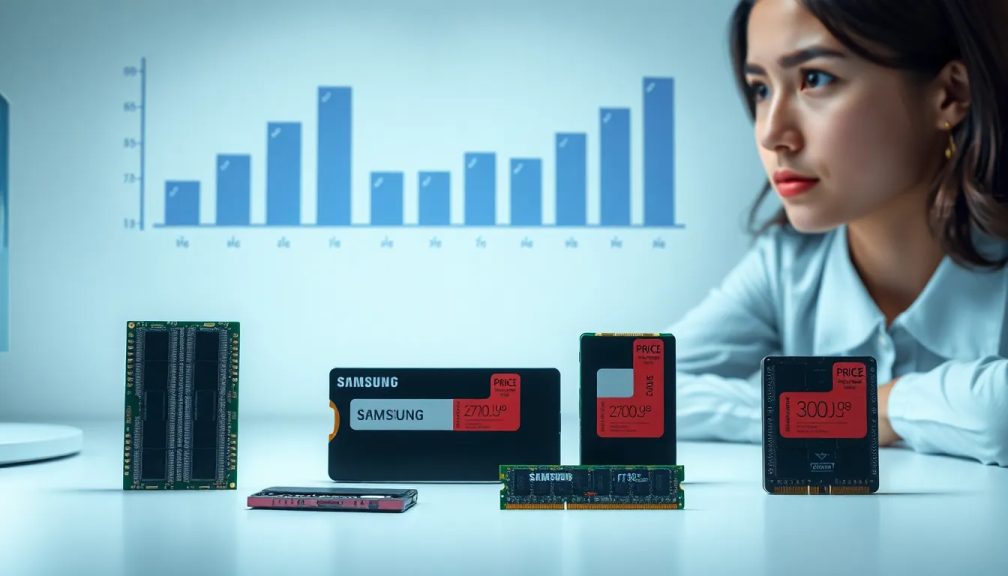Samsung to Increase Prices on Memory and Storage Devices

As the tech landscape continues to evolve, consumers and businesses alike brace for changes that may soon impact their budgets significantly. One of the most pressing issues on the horizon is the anticipated rise in prices for memory and storage devices, particularly from industry giant Samsung. If you’re considering upgrading your tech, now might be the time to act.
Anticipated price increases from Samsung
According to a report from South Korean outlet New Daily, Samsung is set to increase prices on its DRAM memory and NAND flash drives starting in the fourth quarter of 2025. The company plans to implement a price hike of approximately 15% to 30% on DRAM memory and about 5% to 10% on NAND drives.
These increases are attributed primarily to heightened demand from cloud service providers, which are rapidly expanding their data centers to accommodate the growing need for cloud computing capacity. As businesses continue to shift towards digital operations, the demand for reliable and efficient storage solutions is surging, thereby impacting pricing.
Industry-wide price hikes
Samsung is not alone in this trend; other major companies are also adjusting their pricing structures. For instance:
- SanDisk plans to raise its prices on NAND devices by 10%.
- Micron has announced a significant price increase of 20% to 30% for their memory and storage products.
- Kioxia, a leading player in the NAND flash market, is also expected to follow suit with similar price adjustments.
This pattern is indicative of a broader trend within the technology sector, where components like memory and storage are becoming increasingly costly. Many industry experts are now advising consumers and businesses to prepare for these changes in order to mitigate potential financial impacts.
Factors contributing to the price increases
Several key factors are driving this surge in prices across the memory and storage markets:
- Increased Demand: The ongoing digital transformation has led to a substantial surge in demand for cloud storage solutions.
- Supply Chain Constraints: Global supply chain disruptions, exacerbated by the COVID-19 pandemic, have made it difficult for manufacturers to keep up with demand.
- Raw Material Costs: Fluctuations in the cost of raw materials used in memory manufacturing have also contributed to rising prices.
- Technological Advancements: As companies invest in cutting-edge technology, the cost of research and development is often passed down to consumers.
What this means for consumers and businesses
For consumers, the impending price increases could mean a more significant investment when it comes time to upgrade devices or expand storage capacities. Businesses, particularly those reliant on cloud services, may need to reassess their budgets and storage strategies to accommodate these rising costs.
Here are some potential actions that both consumers and businesses can take:
- Consider Purchasing Now: If you anticipate needing additional storage or memory, it may be wise to purchase now before prices increase.
- Evaluate Alternatives: Explore alternative brands or types of storage that may offer better pricing.
- Monitor Market Trends: Keeping an eye on market fluctuations can help you make informed purchasing decisions.
- Invest in Quality: Prioritize quality and performance when selecting memory and storage options to ensure long-term value.
Understanding the memory and storage market
The memory and storage market is pivotal in the tech industry, supporting everything from mobile devices to large-scale data centers. With advancements in technology, the need for faster, more reliable memory solutions has only intensified. Here are some key aspects to understand:
- DRAM (Dynamic Random Access Memory): Used for temporary data storage, DRAM is crucial for the performance of devices such as computers and smartphones.
- NAND Flash: This type of memory provides long-term data storage and is widely used in SSDs and mobile devices.
- Market Dynamics: The memory and storage market is characterized by rapid technological advancements and fluctuating demand, making it essential to stay informed.
As the landscape continues to change, understanding these components will better equip consumers and businesses to navigate the complexities of the market.
Future outlook and considerations
Looking ahead, the tech industry is poised for continued transformation. With the rise of artificial intelligence, machine learning, and the Internet of Things, the demand for memory and storage solutions is expected to grow exponentially. It is essential to consider how these trends will influence pricing and availability in the near future.
To gain further insights into the implications of these changes, check out this informative video on the topic:
In conclusion, being well-informed about the evolving memory and storage landscape can empower consumers and businesses alike to make strategic decisions in the face of impending price hikes.




Leave a Reply